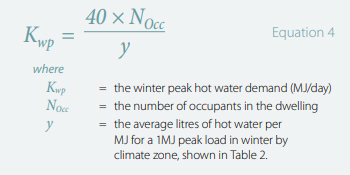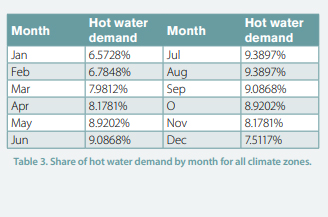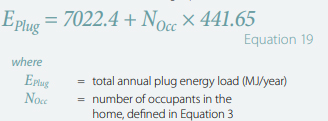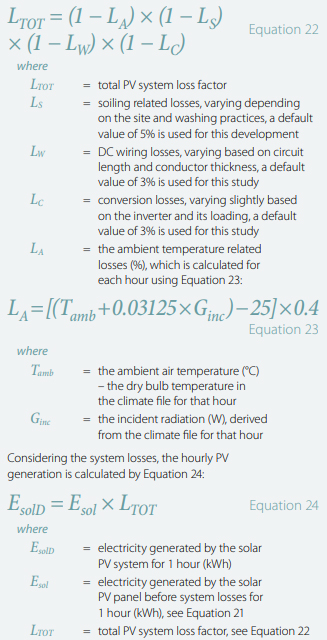Dr Zhengen Ren, CSIRO Energy
ABSTRACT
In 2019, Australian energy ministers agreed on the need for the Trajectory for Low Energy Buildings (the Trajectory). One of the key aspects in the Trajectory for residential buildings is to expand the Nationwide House Energy Rating Scheme (NatHERS) to offer nationally accredited whole-of-home (WoH) tools to enable compliance requirements in the National Construction Code (NCC).
CSIRO was commissioned by the NatHERS Administrator to develop a benchmark WoH tool in the required timeframe. For this purpose, the WoH tool was developed by implementing new modules for space heating and cooling, water heating, lighting, swimming pool heating, other appliances, solar PV and a battery into the modified version of the AusZEH design tool. The initial version of the tool was released in December 2019 for evaluation. After receiving feedback of stakeholders, the WoH tool was recently updated using the extensive input from the NatHERS Technical Advisory Committee (TAC) and other industry experts.
INTRODUCTION
In February 2019 the Council of Australian Governments (COAG) Energy Council agreed on the Trajectory, which identified cost-effective opportunities for energy-efficiency improvements through a building system, from building envelope thermal performance to appliance energy usage and renewable energy generation. In summary, the Trajectory aims to:
- Set a trajectory towards zero energy (and carbon)-ready buildings;
- Implement cost-effective increases to the energy efficiency provisions in NCC 2022; and
- Expand NatHERS to offer nationally accredited WoH tools to enable verification requirements in the NCC.
The consultation draft of NCC 2022 was released in August 2021 by the Australian Building Codes Board (ABCB). A WoH annual energy use budgets for Class 1 and Class 2 dwellings were proposed in the amendments of the consultation draft.
The annual energy use includes space heating and cooling, water heating, lighting and pool and spa pumps. The annual energy use budget is based on “societal cost of energy”, which is related to infrastructure (e.g., grid stress, requirements of energy storage, etc.) and environmental impacts (e.g., global warming caused by carbon emissions).
Societal cost includes the cost of energy used by a building and the broader “cost” to society for the use of that energy. Societal energy costs associated with energy use are dependent on time of use and the energy supply mix. Refer to the ABCB Scoping Study [1] for details of how the societal cost of energy is defined.
If a residential building is installed with onsite renewable energy systems (e.g., rooftop PV), this can provide an offset to the societal cost of the energy used in the building.
To support the objectives of the Trajectory, including the proposed energy efficiency provisions for NCC 2022, NatHERS is being expanded to provide WoH energy assessments and ratings. Since February 2019 the NatHERS Administrator has held discussions with NSW Planning and Environment; the Victorian Department of Environment, Water, Land and Planning; Sustainability Victoria; and CSIRO regarding tool-harmonisation opportunities. After these discussions, the consensus was that a WoH benchmark tool under the NatHERS framework should be developed. CSIRO was commissioned to deliver a benchmark WoH tool in the required timeframe.
A Technical Expert Panel (TEP) and workshops were organised by the NatHERS Administrator to seek recommendations from the TEP to inform the policy agreement on assumptions/settings behind whole-of-house modules for tools.
Following these assumptions/settings, CSIRO developed a WoH tool by implementing new modules for water heating, lighting, swimming pool, other appliances, and solar PV battery into the modified version of the AusZEH design tool [2, 3].
The energy requirement for space heating and cooling was estimated by the Chenath engine. The energy efficiency of HVAC and other appliances refers to the Equipment Energy Efficiency [4] program, one of the programs implemented by the COAG Energy Council. The initial version of the tool was released in December 2019 for evaluation. After receiving feedback from stakeholders, the WoH tool was recently updated with the extensive input from the TEP and other industry experts. This report details the modules implemented in the WoH tool.
IMPLEMENTING MODULES INTO THE AUSZEH DESIGN TOOL
The Whole of Home framework builds on the existing NatHERS framework and technology. The CSIRO Chenath engine is applied to calculate energy requirements for space heating and cooling with hourly data over a period of one year. In collaboration with the NatHERS TAC and other industry experts, methods were developed for calculating the energy demand of a home [5], including space heating and cooling appliances, hot water system, lighting, pool and spa pumps, on-site solar PV system, onsite battery and plug–in appliances.
Space heating and cooling
Hourly energy use for a zone is calculated using Equation 1:

Note that a constant COPA value is applied in the energy consumption calculation for a specified HVAC system because the system is not modelled actively by the Chenath engine.

Note that for window or wall-mounted heating and cooling equipment, the system loss is assumed to be ignored.
Currently, for the NatHERS thermal performance calculation the home is assumed to be fully occupied all the time (24 hours per day, 365 days per year), and the Chenath Engine therefore ensures that the temperature remains within the comfort band at all times. Feedback of stakeholders suggests this fully occupied profile may be representative of some household types, but may not be appropriate for other household structures where absence during the day will impact on how and when energy is used in the home.
The Whole of Home Occupancy Working Group recommended that for Whole of Home (WHO) calculations a dual-occupancy profile approach should be applied to estimate thermal loads for calculating heating and cooling equipment energy use.
For the development of this WoH tool, two different occupancy profiles in NCC2022 of “All-Day” and “Work Day” in combination are used to calculate whole-home energy consumption.
Consequently, the WoH tool will undertake two separate calculations using two different occupancy profile assumptions. These two separate calculations are:
- The single profile of “Fully Occupied” is applied for the dwelling’s thermal performance assessment (i.e., the existing NatHERS star rating).
- The dual profiles of “All-Day” and “Work-Day” is used for the dwelling’s Whole of Home assessment (energy consumption and productions from appliances).
To obtain a single, combined WoH assessment result for a parameter of interest (e.g., energy consumption for space heating/cooling), the values obtained for each of the separate performance assessments (All-Day and Work-Day) must be weighted using Equation 2:

water heating
Research carried out in 2019 [6] identified a recommended daily hot water allowance per occupant, and equations to determine the annual energy use of different hot water systems was developed. This approach was confirmed by the NatHERS Whole of Home Water Heater Working Group in 2021. The energy used by the hot water system is mainly determined by three components:
- Hot water demand (by households)
- Location (Solar climate zones 1–4 plus Heat Pump HP5-AU)
- Hot water system type.
It is assumed that 40L hot water is required per person per day winter peak demand. Using the same approach as used for the NatHERS thermal performance assessment [5], the number of occupants is calculated using Equation 3:

The winter peak hot water demand can be estimated as:


Note that for the purposes of simulation under AS/ NZS 4234, the assumed conditions for heat pumps in zones HP1-AU to HP4-AU are the same as Zones 1 to 4 for other types of water heaters.
The annual energy demand is defined in Equation 5:

For the above: 365 is days in a standard year, 1,000 is a factor to convert MJ to GJ, and 0.904521 is a factor to convert a winter peak demand MJ/day into an average annual daily demand, taking into account days per month and the seasonal hot water demand profile in AS/NZS 4234.
Based on a third-order polynomial with coefficients for each specific water heater type in each climate zone, the annual energy input Ewi can be estimated from the annual energy demand Ewd in Equation 6

All coefficients a, b, c, and d for each specific water heater type in each climate zone are detailed in Appendix B of [5].
The water heaters that are currently covered are:
- Solid fuel
- Off-peak electric (assumes “large” MEPS compliant storage unit)
- Continuous electric (assumes “small” MEPS compliant storage unit)
- Instantaneous electric
- Electric boosted solar thermal – a range of sizes and performance levels
- Gas-boosted solar thermal – a range of sizes and performance levels
- Heat pump – a range of sizes and performance levels
- Gas storage (4.0, 4.5 or 5.0 stars)
- Gas instantaneous (4.0 to 7.0 stars in 0.5star increments).
Taking into account the monthly energy profile and the days per month in a standard year, the share of hot water demand from the water heater by month is set out in Table 3, which is also used to allocate annual energy into month for instantaneous water heaters. For other type of heaters, the share of purchased energy by month is detailed in [5].

Daily energy use can be calculated using Equation 7

Hourly loads will depend on the type of water heater and the energisation profile. Some initial assumptions regarding time of energy input into the water heater are defined in Nationwide House Energy Rating Scheme. 5 The hourly breakdown of energy is defined using Equation 8:

Lighting module
The annual energy consumption for lighting is calculated using Equation 9:

Not all lights are on at the same time, and therefore the lighting load should be distributed across the day. An average hourly use is therefore calculated, based on the number of hours per day that any lights are assumed to be on. All outputs are to be broken down by hour, which is defined in Table 37 of Nationwide House Energy Rating Scheme 5.
Hourly energy consumption for lighting is calculated using Equation 10:

Note that although heat from lighting is considered in the internal heat gains for thermal performance simulation by Chenath engine, but it is not integrated with the outputs calculated by Equation 10
POOL AND SPA EQUIPMENT MODULE
Pool pump energy consumption is assumed to be primarily driven by the size of the pool and the type of pump used. If pool volume is known, pool volume is directly entered by the user. If pool volume is not known, the user should estimate pool volume based on pool surface area using Equation 11:

Base pump sizes are assumed to correlate with pool size, which is defined in Equation 12:

Pump energy is based on the pump size and the efficiency of the system. Three types of pump speed are included in this study: single-speed, dual-speed and multi-speed. Pump operating power reflects the average power of the pool pump across its operating cycle, which is calculated using Equation 13:

Power adjustment factor is defined in Table 4.

If the star rating under the 2019 GEMS determination is known, this can be entered by the user. If the star rating is not known, it is estimated based on pump technology. This is defined in Table 5.

With the pump star rating, a weighed energy factor is required to calibrate star rating against the pump size using Equations 14 and 15:

Pool pumps are assumed to run longer during swimming seasons than non-swimming seasons. Pumps are assumed to be turned on a set time, and run until the required number of cycles is achieved. Pump off time is defined by Equation 18:

Cleaning energy is different depending upon filter and pump type, which is detailed in Nationwide House Energy Rating Scheme.
PLUG LOADS
Apart from equipment already covered in the previous sections of this report, this section will address energy consumption for other equipment, such as whitegoods, audio visual, small appliances, computers and peripherals, other electronic and stand-by power.
In this development, the assumed annual plug loads have been based on work undertaken previously for Sustainability Victoria and the Australian Building Codes Board (ABCB). From this work annual average total plug loads per number of occupants were derived, which are calculated using Equation 19:

Plug loads are not evenly distributed across the day or cross the seasons. The annual plug load value is broken down into hourly loads across the year based on the expected distribution of those loads across the year. Hourly loads of plug loads are calculated using Equation 20:

ONSITE ENERGY GENERATION AND BATTERY STORAGE
The power output from a PV array can be calculated using Equation 21:
In this development, the assumed annual plug loads have been based on work undertaken previously for Sustainability Victoria and the Australian Building Codes Board (ABCB). From this work annual average total plug loads per number of occupants were derived, which are calculated using Equation 19:


PV SYSTEM LOSSES
The total system losses include ambient temperature related losses, soiling-relating losses, DC wiring relating losses, and conversion losses. The total system losses are calculated using Equation 22:

BATTERY STORAGE
A battery may be used to store the excess generation from solar PV that exceeds hourly demand for electricity of the household in any given hour for use at a later time (e.g., at night time). The complexity of modelling the performance of batteries depends significantly on the technology.
In this study, batteries are modelled as simple energy storage tanks (as appliable to lithium-ion batteries) and the battery control system is assumed to be a basic system that is not responsive to either the expected future load profile or current or future network price signals. Whenever excess generation is available, it is stored. And whenever onsite demand exceeds available supply from a PV system, then the battery is used to make up any shortfall in any particular hour (all subject to the charge, discharge and capacity limitations of the battery) [5].
conclusion
With the extensive input from the NatHERS TAC and other industry experts, the WoH tool for new houses was significantly updated, including module updating of space heating and cooling, water heating, lighting and solar PV, and additional modules of battery and other plug-in loads. With requirements of NCC 2022, the 2005 RMY weather files were upgraded to 2016 RMY weather files and related space heating and cooling load limits were implemented. For whole house energy consumption calculation, the Chenath engine was modified to simulate two occupancy profiles of ‘All-day’ and ‘Work-day’.
About the author
Dr Zhengen Ren is a principal research scientist at the CSIRO Energy Division, where he manages the development of decision support tools (such as the AusZEH design tool and WoH software tools for new and existing houses) to simulate energy consumption for residential buildings. He is also a key member for further development of the Chenath engine and AccuRate for the Nationwide House Energy Rating Scheme.
In 2002, Zhengen completed his PhD at Queen’s University Belfast, where his work focused on the indoor environment.
REFERENCES
[1] Australian Building Codes Board (2019). Energy efficiency – NCC 2022 and beyond scoping study (Available from https://consultation.abcb.gov.au/engagement/energy-efficiency-scoping-study-2019/, accessed on 21 December 2021).
[2] Ren, Z., Foliente, G., Chan, W., Chen, D., Ambrose, M. and Paevere, P. (2013). A model for predicting household end-use energy consumption and greenhouse gas emissions in Australia. International Journal of Suitable Building Technology and Urban Development 4, 210–228.
[3] Ren, Z., Chen, D. and James, M. (2018). Evaluation of a whole-house energy simulation tool against measured data. Energy and Buildings 171, 116–130.
[4] Energy Rating: The Equipment Energy Efficiency (E3) Program (Available from https://energyrating.gov.au/about, accessed on December 22, 2021).
[5] Nationwide House Energy Rating Scheme (2021). Draft NatHERS whole of home national calculation methods. Draft Version 3.0, November 2021, Personal communication (not available to public yet at this stage).
[6] Energy Efficient Strategies (2019). Review of hot water energy consumption data as input to the whole of house rating proposal under NatHERS.
[7] Ren, Z., Jian, A. and Chen, D. (2019) Development of Whole-of-Home (WoH) energy rating tool. CSIRO report ETB R-212783-01 submitted to Australian Government Department of Industry, Science, Energy and Resources.








